Wild predators are almost always painted as the villain in myth and popular culture. The Big Bad Wolf terrorized the three little pigs and Little Red Riding Hood. Looney Tunes’ Wile E. Coyote was forever chasing the Road Runner. And even mainstream media portrayals of wolves and grizzlies often borders on the sensational.
But the truth is that predators are key for healthy ecosystems, and even healthy people. A recent paper from Chris O’Bryan and other Australian scientists gathered together all of the existing science on how predators actually directly benefit humans across the globe. Read on to learn how oft-maligned predators can increase agricultural output, reduce disease risk, and even reduce human injury.
-
Dingoes Increase Cattle Profits by Eating Kangaroos
Australia
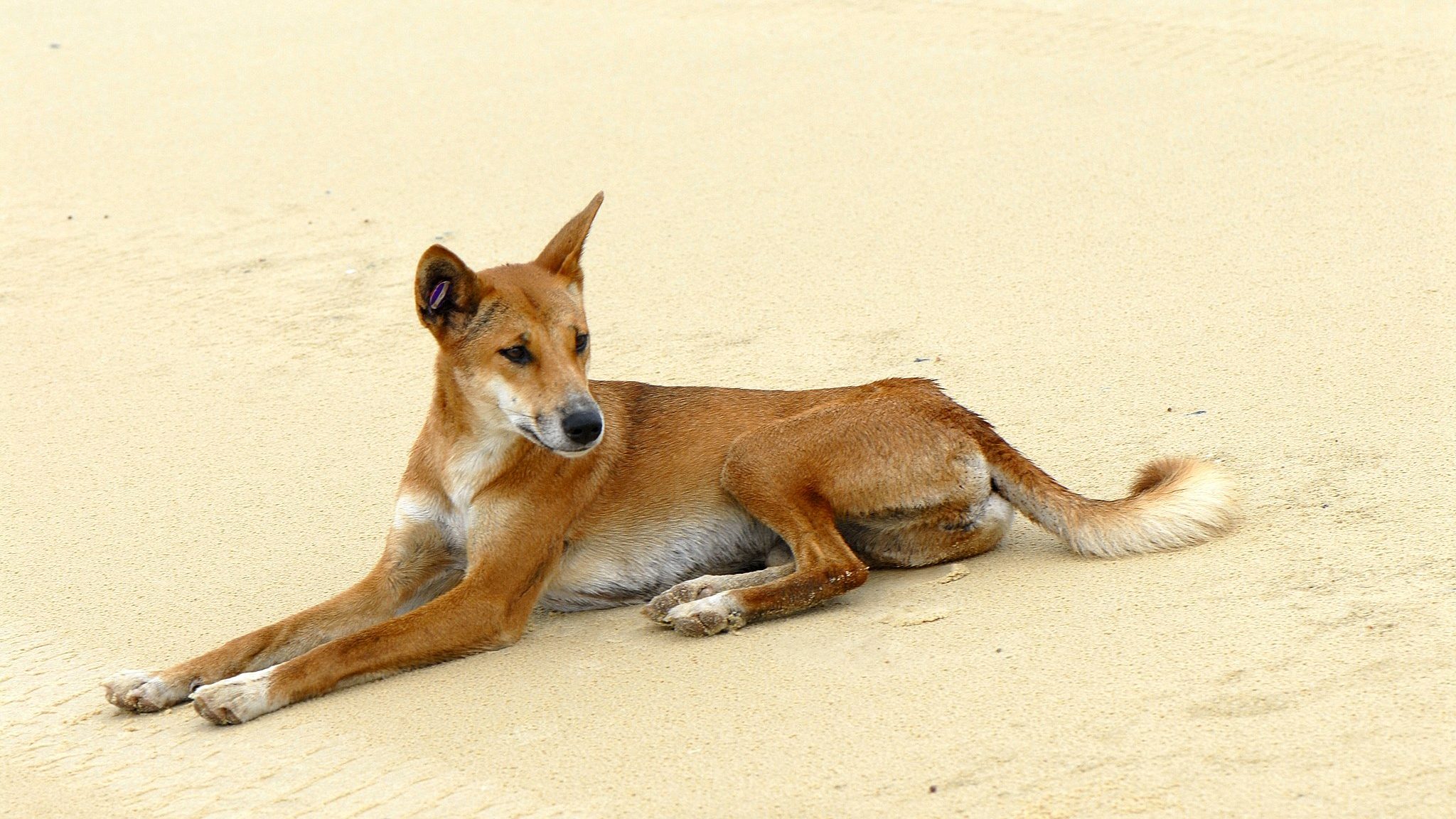
A dingo lounges on Fraser Island, Queensland. Photo © Sam Fraser-Smith / Wikimedia Commons The dingo has long had a bad rap in western culture, even before Azaria Chamberlain’s death prompted the pop-culture punchline “The dingo got my baby!”. When livestock goes missing in the Australian bush, ranchers blame dingoes, which do on occasion prey on sheep and cattle. And like coyotes and wolves in North America, the canids are often killed in retaliation.
Counterintuitively, research shows that dingoes can actually increase livestock productivity, despite snacking on the occasional lamb. In many areas of Australia, wild kangaroos compete with livestock for food. Using a computer model, scientists discovered that pasture biomass increases when dingoes help control populations of red kangaroo, which are Australia’s largest native herbivore. More grass equals fatter, healthier cattle, which in turn produce more meat and milk per animal and increases profit margins.
Dingoes have a major conservation benefit, too. Non-native cats and foxes are decimating dozens of unique Australian species, like the adorable bilby or the Instagram-famous quokka. But research shows that when dingoes are around, cats spend more time hiding and less time hunting. (They also sometimes end up as dingo dinner.) So reinstating dingoes as the top predator is a cheap way to tackle invasive species and help farmers get more out of their grazing lands.
-
Urban Leopards Prevent Rabies by Eating Feral Dogs
India
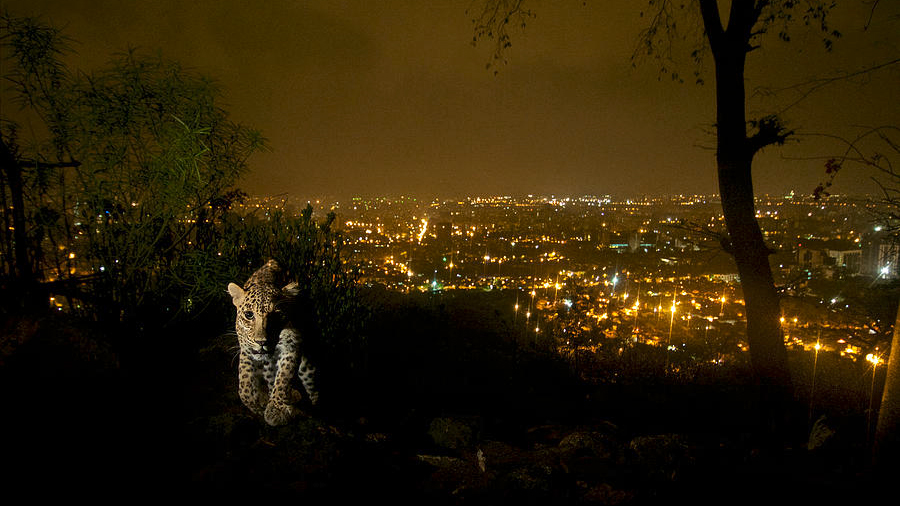
Leopard with Mumbai in the background. Photo © Steve Winter/National Geographic It’s not every day that you see a leopard prowling through city streets, but it’s a common occurrence in Mumbai, India. Sanjay Gandhi National Park sits in the middle of the rapidly expanding city, and it’s also home to a population of 35 leopards. While living check-to-jowl with a big cat does have its risks, these leopards are actually saving thousands of lives each year but removing a far more dangerous animal — feral dogs.
Feral dogs are a major health issue in India, where they cause the majority of the 20,000 rabies deaths each year. And with an estimated 30 million stray dogs across the country, it’s exceedingly difficult and expensive to control dog populations. Enter the leopards.
Scientists recently estimated that Mumbai’s leopards consume about 1,500 dogs per year — about 40 percent of their diet — preventing around 1,000 bite incidents and 90 potential rabies cases. They also calculated that having leopards around saves the city an estimated $18,000 USD in dog-management costs. You can read more about this research in our story on Cool Green Science.
-
Cougars Reduce Deer-Vehicle Collisions
United States
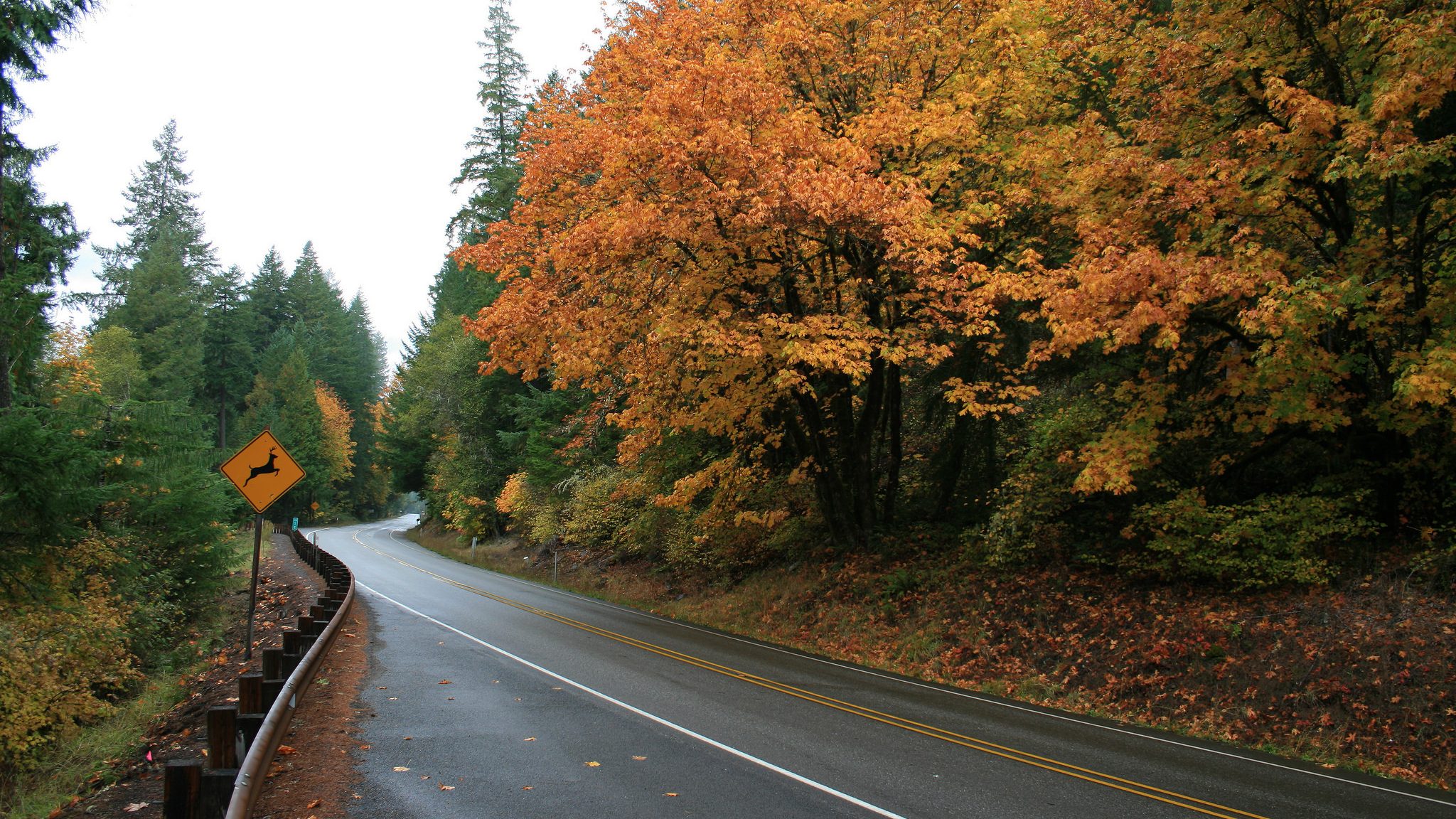
Deer warning signs along the road. Photo © BLM of Oregon and Washington / Flickr For unlucky drivers in the eastern United States, Bambi can be deadly. An estimated 1.2 million deer-vehicle collisions occur every year, causing 200 human deaths (plus a whopping 29,000 injuries) and costing $1.6 billion USD in damages. Accident rates continue to rise despite expensive efforts to control deer populations by hunting and even birth control.
Humans eradicated the carnivore species that once kept deer populations in check — like cougars, bobcat, and lynx — from eastern forests several centuries ago through a combination of hunting and habitat destruction. But in recent decades, the predators are making a comeback. Cougars are slowly expanding their range into the midwestern states, chowing down on deer as they go.
In South Dakota, where cougars are already established, the cats prevent $1.1 million in collision costs annually. Scientists wondered just how much of a benefit cougars might provide if they recolonized all of their original range. Models suggest that within 30 years of re-establishment, cougars could reduce deer densities and collisions by 22 percent in the eastern US, preventing 21,400 human injuries, 155 fatalities, and $2.13 billion in avoided costs.
Who knew having big cats around could save so many human lives?
-
Falcons Protect Vineyard Crops from Hungry Songbirds
New Zealand

A Karearea, or New Zealand falcon. Photo © Andy Frost / Wikimedia Commons Nothing compliments a good Marlborough sauvignon blanc like a falcon disemboweling a songbird. But then again, I’m a birder.
New Zealand wineries work hard to protect their precious (and tasty) grapes from hungry wildlife, particularly insects and songbirds. Three species of non-native songbirds, introduced by settlers from Europe, are particularly pesky for the country’s vintners. Meanwhile, native bird species are under great threat from mammalian predators that — you guessed it — were also introduced during colonization.
But there’s a potential solution that could reduce crop-raiding birds, improve grape harvests, and help a threatened species: stocking vineyards with New Zealand falcons. Research from a group of Kiwi scientists shows that the presence of falcons reduced the number of non-native pest birds and decreased the amount of bird-eaten grapes by 95 percent. They calculated that reintroducing falcons could potentially save the vineyard between $234 and $326 USD per hectare, depending on the grape variety. Early research from California suggests that barn owls might play a similar role, where in agricultural landscapes 99.5 of their of prey are agricultural pest species.
It’s a win-win for oenophiles, vintners, and conservationists. Cheers to that.
-
Vultures, Hyenas & Jackals Clean Up Dangerous Human Waste
Europe, Africa & Asia
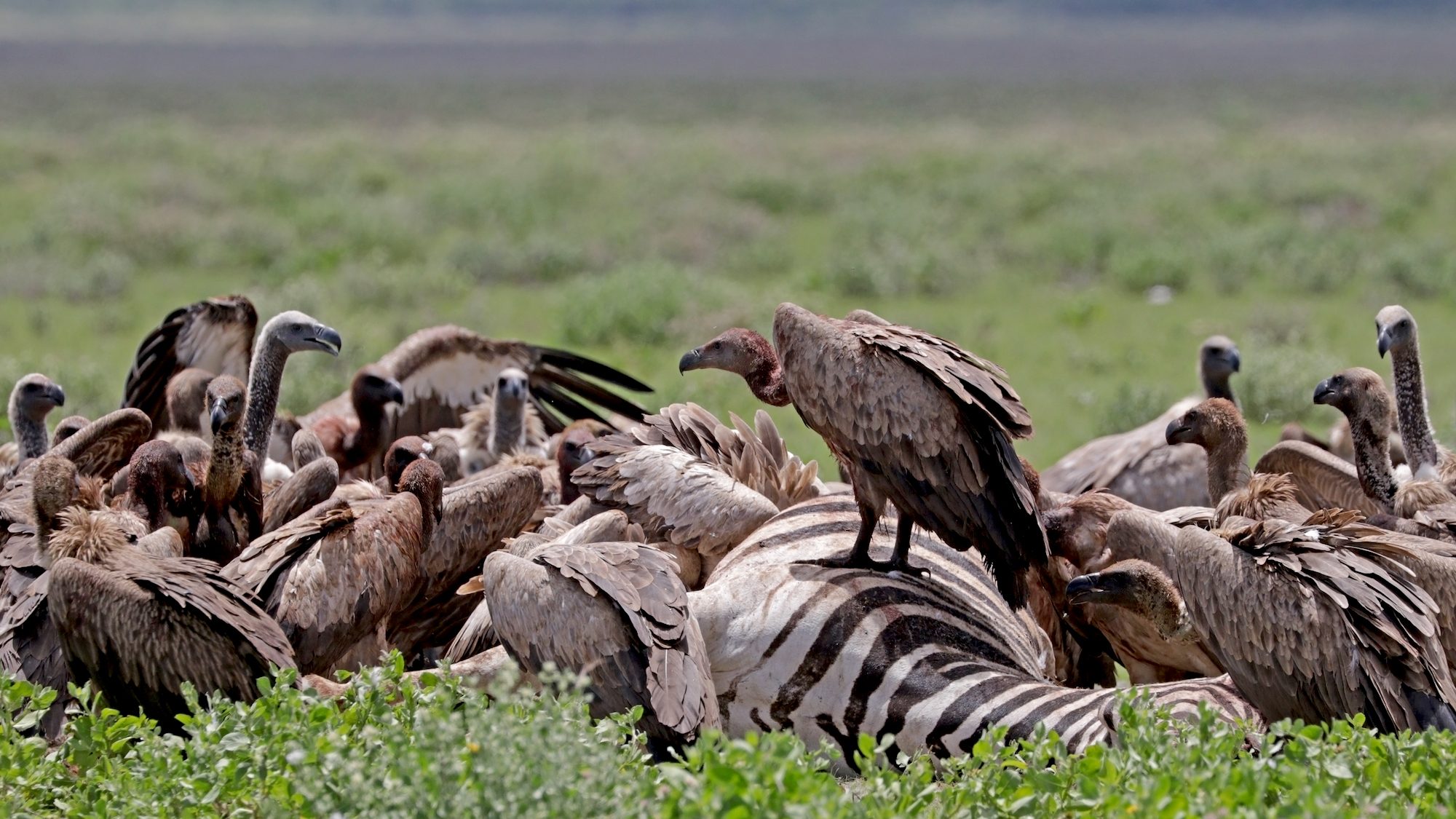
White-backed vultures feed on a zebra carcass. Photo © Sharp Photography / Wikimedia Commons Waste management is key when it comes to improving lives and health of people living in the developing world. As it turns out, local scavengers are already lending a helping paw (or wing), scoring a meal and protecting human health in one go.
In Serbia, golden jackals reduce more than 3,700 tonnes of domestic animal waste each year, including road-killed animals and waste dumps, with a savings of more than €500,000 annually. They also consume an estimated 13.2 million rodents that would otherwise eat important food crops. When scaled up across the species’ range, this amounts to more than 13,000 tonnes of organic waste across urban landscapes in Europe.
Spotted hyena play a similar role in sub-Saharan Africa. Scientists studying Ethiopian hyenas reported that nearly 90 percent of animals they studied frequently scavenged at human waste dumps, consuming waste and livestock carcasses.
And canids aren’t the only species helping out with waste removal: a study on vultures in Yemen found that the birds dispose of up to 22.4 percent of the local villages’ organic waste each year. Other research suggests that vultures, like Mumbai’s leopards, help control feral dog numbers, thus preventing rabies deaths.
More science is needed to establish a direct link between the waste-removal services that these species provide and improved human well-being. But it’s easy to see how less waste can benefit human health. By removing waste and carcasses, predators likely reduce groundwater contamination and the risk of disease. And this keeps livestock herds healthier, too, protecting valuable assets for rural people.
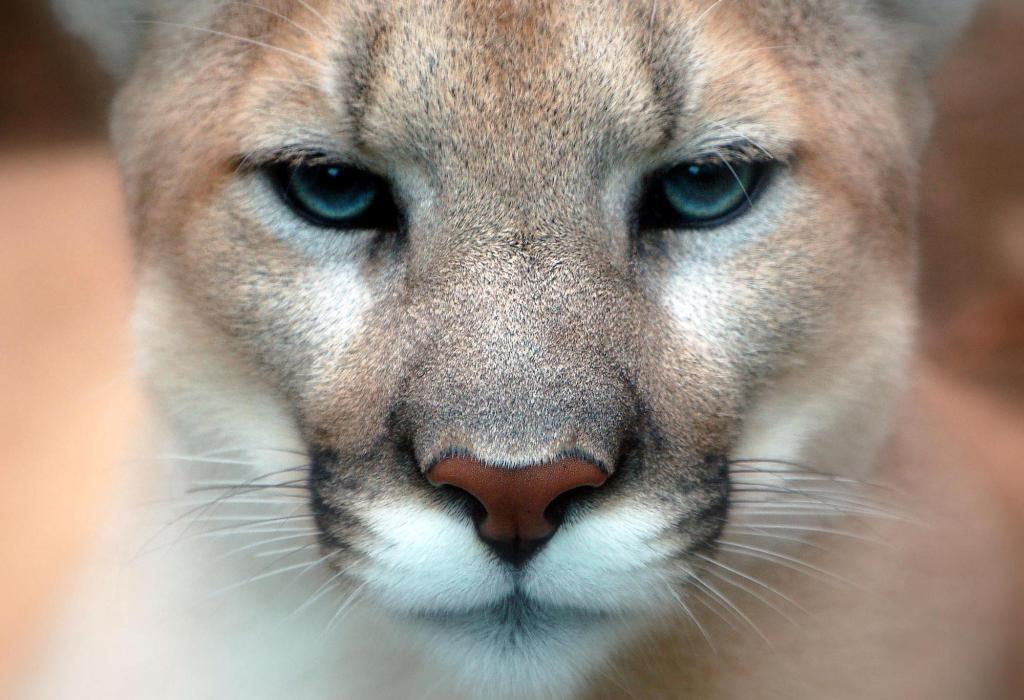



Yesterday I listened to members of a legislative committee in Oregon trot out all the old superstitions and fictions about how bad coyotes are supposed to be and all the usual stories about “damage” ranchers incur before voting down a bill meant only to stop coyote killing contests. These same people will complain about the damage of rodents and hordes of rabbits do to their crops and grain stores. They truly believe what they are saying, in spite of the fact that study after study shows that when predators are allowed to flourish, they keep rodents in check and the populations can begin to balance, and the environment they are in start returning to health. This story adds the dimension of benefiting human beings directly. What saddens me, though, is that it still divides the world into human and not-human, and perpetuates the idea that non-human has value only in terms of how it benefits the human world. Fact is, we are all part of the same world and we need to keep that in mind.
Thank you for this article. It will help the public appreciate now these animals.
This is a great article-thank you for the facts. We have property in Vermont, and while we allow deer and turkey hunting, no one is allowed to shoot the coyotes. Yes, the do take out some deer, but they also hunt and eat the rodents, including mice that carry Borrelia burgdorferi, the spirochete bacterium that causes Lyme disease, which is rampant in Vermont. The farmer haying the fields appreciates the lack of ground hogs, too.
Save all the Animals now and forever.
Wonderful article! As a conservationist, I always gravitate toward the predators. They are my favorite, especially big cats, and they DO get a bad rap. Sharing this great article. Thank you.
Far too many humans are completely unaware of the benefit predators are to us AND other wildlife & their habitat. There needs to be more publicity about this. The immediate fallback to killing the wild predators rather than using non-lethal controls is partially what put us & our environment in the mess its in!
Good articles.
I love this. Thank you 🙂
“Nothing compliments a good Marlborough sauvignon blanc like a falcon disemboweling a songbird.”
That may well be the best line I’ve ever encountered in a SciComm article. Cheers to you for not falling into the ever-present trap that is never far from science writing: that of being boring.